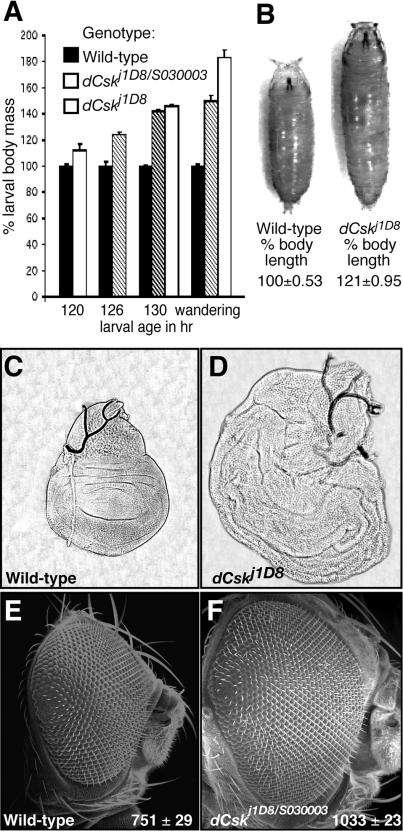FIG. 2.
Mutations in dCsk cause increased body and organ size. (A) Graph of average larval mass during third instar (final larval stage). Values are normalized to wild-type larval mass for each time point. Larval age is noted in hours AED. A minimum of 40 larvae were measured for each genotype at each time point. Unstaged wandering third-instar wild-type larvae were compared to >160-h dCskj1D8 wandering larvae. Bars indicate standard errors. (B) Wild-type and dCsk mutant pupae with relative length measurements. Values are normalized to wild-type body length. A minimum of 35 pupae was measured for each genotype. (C and D) Phase contrast images of wing imaginal discs from wandering third instar larvae. Panel D shows a dCskj1D8 mutant disc photographed at the same magnification as a wild-type disc (C). (E and F) SEMs of a wild-type adult eye and a dCskJ1D8/S030003 pharate adult eye taken at the same magnification. Inset values show the average number of ommatidia per genotype (n = 3 for each).

